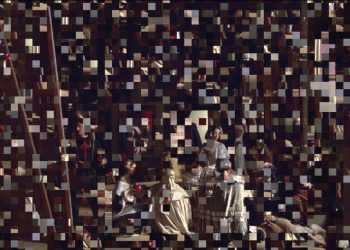Serena Williams is undoubtedly one of the most iconic athletes in all of sports. Serena supercharged modern women’s tennis, bringing a powerful, dynamic style to the game never before seen.
Williams’ origin story is truly inspiring. She grew up in a relatively poor household, playing on the public tennis courts of Compton, California. Serena and her sister Venus Williams were taught the game by their father Richard Williams.
Richard Williams was a fascinating man, who became a legend in the tennis world because of his success coaching his daughters. A skilled negotiator, he had already secured an eight-figure endorsement deal for his elder daughter Venus when he met Antonio Bertone who worked as the Global Head of Brand Management for German sportswear company Puma.
Most fans associate Serena Williams with Nike, and it’s true that she had a long-term, 18-year partnership with the company. However, it is often overlooked that William’s first endorsement deal was with Puma, based on a contract negotiated when she was only 16-years-old.
This partnership lasted until 2003, when Williams signed with Nike. Williams rose to prominence representing Puma in a wide range of now legendary tennis outfits and styles.
Puma brand manager Bertone saw something truly special in Williams, immediately recognizing her athleticism and talent. But, her father Richard drove an extremely hard bargain. The meeting between the Williams family and Bertone dragged on well past midnight, with Richard Williams continually pushing for the best deal possible for his daughter.
During the meeting, Serena herself dozed off, exhausted by the many hours of negotiation between her father and Bertone. Finally, the meeting ended with a multimillion dollar commitment from Bertone and Puma.
This all came after Puma had completely given up sponsoring tennis players. However, Bertone and his associates found Serena such a promising athlete, they decided to get Puma back into the sport.
Although the deal was negotiated, Bertone didn’t technically have the authority to sign multimillion dollar deals with athletes, so he called the CEO of Puma Jochen Zietz in Germany. Woken up in the middle of the night, Zietz signed off on the deal.
The deal was a huge breakthrough for Serena and gave her the foundation to strive for excellence. In her autobiography, she described receiving her first box of clothing and merchandise from Puma. She recounted how it wasn’t until that moment that she felt like she’d actually arrived as a tennis player.
Serena embraced her new partnership with Puma as a platform to achieve greatness. She even drew up her own design sketches and sent them to Puma’s design team. She said that Puma had fallen behind the curve in many ways, and she wanted to help bring them back to the top of their game.
Williams went on to become a bright rising star in the tennis world, and eventually won the US Open, sporting one of Puma’s iconic outfits and triumphing over world number one Martina Hingis. She wore a beautiful all-yellow tennis outfit that became incredibly popular, and which Puma would later market to fans.
For her efforts on the court, Puma awarded Williams a $500,000 bonus.
Bonnie Dominguez, a designer at Puma and lifestyle brand expert, worked with Williams to create unique designs for each major competition, getting gradually more creative and daring with her outfits.
At one point, Williams developed such a reputation for being a fashion trendsetter on court that the tournament organizers required Puma to send them her outfit design in advance. In case you’re not a tennis fan, Wimbledon has a strict all-white dress code for players in the tournament. Serena was quickly becoming a cultural icon.
In 2000, Williams enrolled in fashion and arts classes at the Art Institute of Fort Lauderdale. She wanted to advance her fashion skills alongside her technique on the tennis court. In this period, Williams was the single most recognized athlete affiliated with the Puma brand.
Puma’s team continued to experiment with new and unique fabrics. In the early 2000s, they made news by dressing Williams in a mesh, tie-dye coverup with a black top. The mesh was transparent at certain angles and, although Williams wore womens shorts underneath the skirt, the outfit was the subject of many angry calls to Puma’s branding team. It’s important to remember that tennis at that time was a far more conservative sport.
For the 2002 US Open, Puma dressed Williams in a now-famous cat suit. Inspired by Halle Berry’s Catwoman, the outfit featured a unique minimalistic design that perfectly aligned with Puma’s brand identity.
In 2003, Williams parted ways with Puma to begin her partnership with Nike. But it was Puma that took a chance on the athlete before she was famous. The company was a terrific jumping-off point for one of the most legendary careers in tennis to date.














